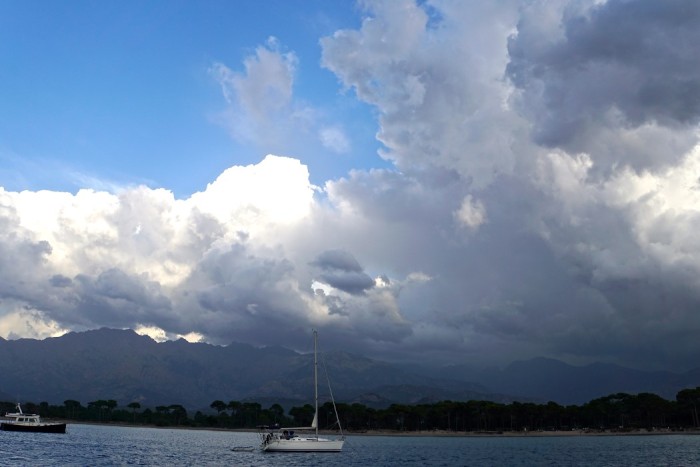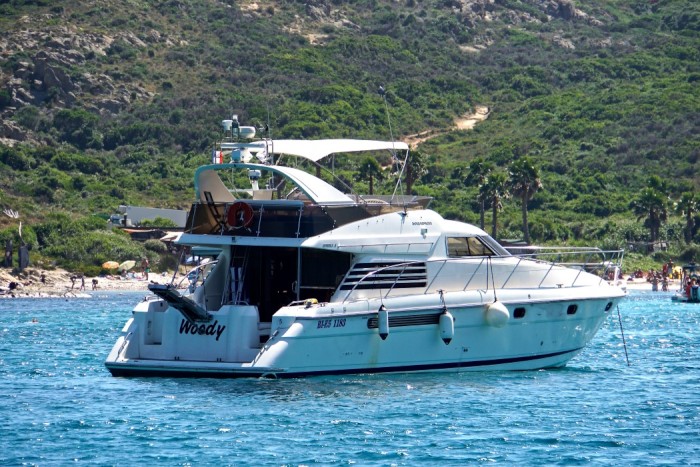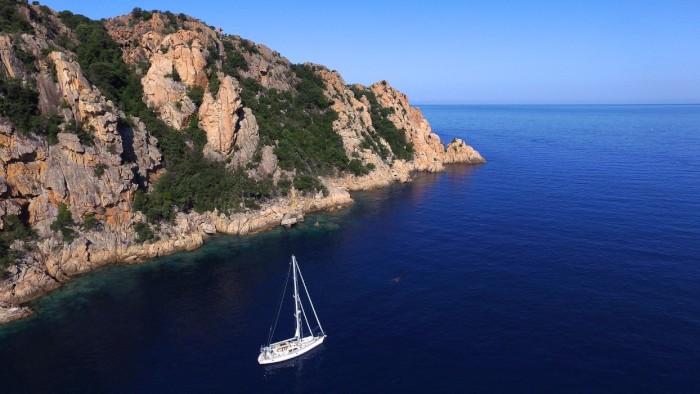The Route Less Traveled
Tropea, Italy I’ve done casual sailing since college. But the more we talked about cruising one day, the more...

We had not stepped foot on land in four days, but as we pulled Berkeley East into the small bay outside Calvi, Corsica, we spotted the beach café on shore and smiled at the thought of some time on terra firma. We made sure BE’s hook was dug in and she had room to swing, and began our after-anchor routine when we noticed the 60-foot powerboat “Woody” anchoring in the front of the cove. By the time we were ready to launch the dinghy to go ashore, Woody seemed to be getting closer. We waited, and watched, Woody was definitely inching towards Berkeley East, its anchor obviously dragging; and we could see no signs of life on board.

Four days earlier, we made the 15-hour crossing to Corsica from the French Riviera. We found a large, beautiful bay just before sunset and formed a plan to spend the next day there, walking on the beach, perhaps a meal on shore. But an unusual south, very hot, dry, gusty wind developed; consequently, time was spent on board Berkeley East instead.



The evening weather forecast showed south and west winds building the next day, so we moved around to Calvi for protection and hoped to enjoy some time in town before, and after, the blow. But the prediction wasn’t accurate and north winds arrived almost immediately, followed by south, then west with gusts over 40 knots, and finally a severe downpour. It was a very freakish weather pattern, even for windy Corsica. But BE was badly in need of a wash so there was an upside to the madness.


We figured a good nights rest and then land time the next morning. At one a.m. we were awakened by a violent roll of Berkeley East, the wash from a passing freighter we thought. But after several more rolls side to side, then crashes fore to aft, it was clear that an unexpected vast swell had worked its way into the anchorage. Beyond uncomfortable, the waves continued into daylight, when we made a speedy departure for calmer waters, where we encountered “Woody.”
After watching Woody drag closer and closer, we knew we had no choice but to move Berkeley East out of striking distance. By this time, Woody was over BE’s anchor so we had to back away, pulling the anchor into clear water. We settled into another spot and once again began “The Woody Watch.” We decided that we would call CROSS (the French Coast Guard) if Woody got too close to the rocks, or drifted out of the anchorage all together. We were about to make that call, when a dinghy casually approached Woody, a man and woman boarding the craft. Within five minutes, they had moved Woody back to where she started, dropped the anchor and were in their dinghy headed to shore.

Some might think that anchoring just requires tossing the hook into the water until it hits the bottom, but there is actually a science, and a bit of an art, to anchoring properly. We typically take 15 or more minutes to set Berkeley East’s anchor, sometimes longer, and we often set multiple times until we are comfortable and confidant. Clearly, the people on Woody had a different anchoring technique, “drop and drift.” We have a friend named Woody, and know a dog called Woody, but we have never seen a boat with that moniker. We wondered if perhaps the name “Woody” was actually a description of the vessel’s captain, meaning a “bonehead.”
We watched as Woody began to wander again, still dreaming of time on the beach in the a.m. The morning forecast brought news that conditions were good to move south, so off we went, leaving the beach café and Woody behind.

Fours hours later, Berkeley East was pounding, waves breaking over her bow and bimini, and into the cockpit. We decided that the current weather forecasts in Corsica could not be trusted, and found a calm cove to spend the night, then continued to make our way south as the wind and sea allowed. After three more days, we still had not walked on solid ground.
